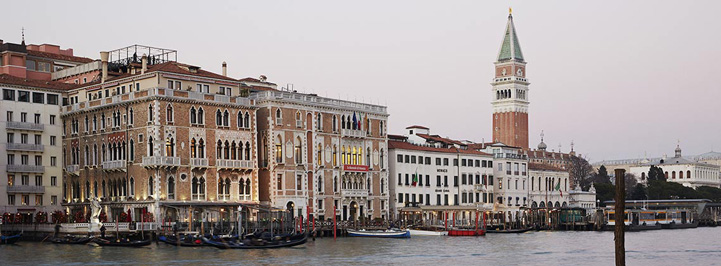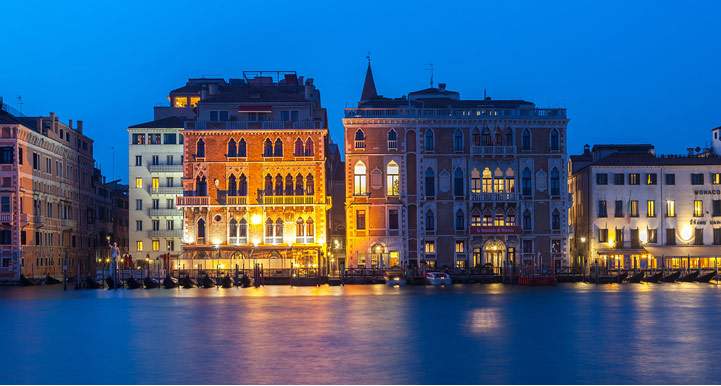2024, the turning point for transactional activity
Contents
- Key points
- Operational outlook
- What will drive demand going forward?
- Have pressures on operator margins really started to abate?
- Ultra-luxury hotels step up expansion
- Extended Stay: what are the best opportunity cities?
- Investment market outlook
- Has pricing stabilised?
- Navigating the debt market
- Outlook
Key Points
- Performance Normalising: Performance across Europe has started to normalise, with growth in Average Daily Rates (ADR) and occupancy slowing, albeit remaining above pre-covid averages
- Operator Margin Challenges: Rising costs in 2023 impacted operator margins, but increased ADRs and operational efficiencies mitigated the effects. However, challenges to margins may persist in 2024 as ADR growth normalises.
- Market Performance: Markets with strong international appeal, such as Rome and Paris, saw robust ADR growth and occupancy recovery in 2023, driving impressive RevPAR increases.
- Sustainable Demand: Despite normalisation in performance, widespread correction in ADRs back to pre-pandemic levels is deemed highly unlikely due to sustained demand recovery, highlighted by ongoing growth in air passenger numbers and consumer prioritisation of travel spend.
- Luxury Hotel Expansion: Demand for luxury accommodation remains strong post-pandemic, supporting ADRs. Luxury brands will continue to expand their footprint with substantial increases in room stock by 2028.
- Shift Towards Serviced Apartments: Serviced apartments have gained popularity with investors post-pandemic due to higher occupancy rates and lower staffing requirements. Lack of purpose-built investable stock, however, continues to create challenges.
- Investment Market Recovery: Despite a 26% YoY decline in total hotel transaction volumes in 2023, there are early signs of recovery, with consecutive quarterly increases in investment activity observed in the second half of 2023. European transaction volumes reached €13.33bn in 2023. This was 26% down on the previous year, but there are indicators suggesting that activity has bottomed out.
- Future Outlook: European hospitality performance is expected to normalise, putting pressure on margins. Transaction volumes this year are forecasted to surpass 2023 levels, supported by reduced borrowing costs. Yields may continue to soften in some markets, with mid-cap private equity buyers expected to return to the market.
Operational Outlook
How sustainable are current ADRs?
The key trend across the majority of hotel markets in Europe in 2023 was the strength in growth of average daily rates (ADRs). For example, as of December 2023, YTD European ADRs were 25.9% above the same period in 2019.
This rate of growth is unsustainable, and as Figure 1 demonstrates, more recently we have seen performance normalise. YoY change in ADRs slowed to 4.6% in December, down from the 17.6% seen in the same month in 2022, alongside a normalisation in occupancy, bringing headline RevPAR (revenue per available room) annual change to 8.8% in December.
Markets that have seen the strongest growth in ADRs, alongside a faster recovery in occupancy, have largely been those with a stronger international leisure appeal.
The top five city markets in Europe based on year-to-December RevPAR performance included Rome and Paris, where ADRs were 51.9% and 51.8% above equivalent 2019 levels, respectively, with occupancy largely fully recovered.
While performance is now normalising, it is highly unlikely that we will see a widespread correction in ADRs back to 2019 levels. There will be certain assets and segments that will see some softening, but with demand across several markets still in recovery mode, there remains significant support for further occupancy growth, which will underpin rates and help drive top-line performance.
This demand is highlighted by the fact that air passenger numbers across some of the largest airports* in Europe are still not fully recovered, with an average differential in December of -1.2% compared to the same month in 2019.
Why a widespread correction in ADRs across Europe is highly unlikely
The pivotal factor in sustaining the newfound stability in ADRs across most European markets lies in the recovery and ongoing growth in demand, which directly influences hotel occupancy levels.
Oxford Economics recently upgraded its forecast for international visitor arrivals into Europe, suggesting these will be fully recovered by 2024, with a resumption in its previous forecast trajectory. 2025 is expected to see an additional 10% increase in arrivals.
What will drive demand going forward?
A combination of factors will continue to drive demand. Over the short term, it’s the continued and expanding appetite for travel, both intra-regionally and from long-haul source markets, which will be key.
According to Tourism Economics, travel continues to be a priority for consumers across different economies, with leisure travel spend, both domestic and outbound, for European and North American consumers accounting for approximately 8% of consumption in 2023. This is in line with 2019 levels and ahead of the long-term average, with forecasts suggesting that this share could increase this year. This appetite is reflected in consumer sentiment, with the European Travel Commission’s (ETC) latest consumer survey reporting that 68% of those surveyed were planning an international trip within the next six months.
Consumers’ prioritisation of travel spend in the face of rising household costs in 2023 was supported, in part, by excess savings accumulated during the pandemic. Across the eurozone, household overnight deposits as of December 2023 were 16.7% above the same period in 2019 (in nominal terms), with this saving excess skewed towards more affluent households. In the latter months of 2023, it was the rapid slowing in inflation seen across a number of major economies that further supported improving travel sentiment, and this is set to continue as we move through 2024.
For example, real disposable incomes for UK and German households, key source markets for the region, are forecast to increase by an average of 1.5% in 2024, with an average annual growth to the end of 2027 of 1.7% per annum.

Indicative luxury hotel
There are, however, growing downside risks to consumer confidence and, in turn, international arrivals into the region, over the short term. Slowing economic growth and geopolitical uncertainty in the Middle East and wider China region could temper traveller sentiment this year. In the case of the latter, this could further delay the full recovery of Chinese arrivals into Europe.
While Chinese arrivals improved through the course of 2023, full-year numbers were estimated to be 67% below 2019 levels, a reflection of visa and airline capacity challenges but also a continued preference for domestic travel. Chinese arrivals are forecast to continue to improve but not fully recover until post-2025.
This slower recovery could pose more of an issue to those markets that have historically attracted significant numbers of Chinese visitors, such as Paris and Milan, particularly as visitor numbers from North America start to normalise. The scale of this potential impact, however, is likely to be offset by growth in other emerging source markets such as India, South America and elsewhere in the Asia Pacific region.
Have pressures on operator margins really started to abate?
It was not just consumers that faced an inflation squeeze last year, operators did too as rising costs generated headwinds for margins. However, most of this was offset by an increase in ADRs and improved efficiencies. HotStats noted in August 2023 that YTD gross operating profit (GOP) margins for several key European markets, such as the UK, Germany and Spain, were ahead of, or in line with, that reported in 2022. In the case of Spain, they were even ahead of 2019 levels, with the other European markets reporting GOP margins only slightly below pre-Covid levels.
While it would appear that the wider European hotel market may have avoided the worst of the margin squeeze in 2023, the real challenges to margins may materialise in 2024 as ADR growth normalises to a slower rate than seen over the last 18 months. The good news is that some of those cost headwinds are already starting to wane – eurozone headline CPI inflation slowed to 2.9% in Q4 2023. While inflation is forecast to lower further, the pace of this will be slower, with Q4 2024 eurozone inflation expected to reach 2.6%.
Slowing inflation has been driven, in part, by falling energy costs. STR CoStar suggested that utility costs per available room across Europe stood at €7.70 in July/August 2023, down 29% on the €10.88 seen in Q1 2023. This is forecast to continue through 2024, with some economists lowering their energy price outlook for this year in response to robust European gas stockpiling and subdued consumption in the region against pre-Ukraine war levels.
This will provide some welcome respite for operators’ bottom lines; however, it’s unlikely that costs will return to 2019 levels anytime soon. For example, utility costs per available room are still 39% above where they were in 2019. In addition, while food inflation has been slowing, it will remain ahead of the headline rate with staff availability, and as a result, wage costs are also under pressure. It will be these pressures on margins that keep ADRs elevated, as some operators will prefer to pursue an ADR strategy rather than drive occupancy.

Indicative serviced apartment
Operators can help to offset these headwinds to profitability by stepping up improvements to operational efficiencies; something often seen with the stronger and better-capitalised operators. For operators who are not as well placed, we expect this squeeze on margins will lead to a renewed focus on exit strategies.
These margin challenges will not be universal. The depth of demand at the ultra-luxury end of the market suggests that for the very best luxury hotels in key destination markets, the prospects for ADR growth are stronger, offsetting continued cost pressures. Limited-service hotels, particularly at the budget end, and serviced apartments, where staffing requirements and on-site F&B offerings are non-existent or kept to a minimum, will also prove to be more immune. In the case of serviced apartments, their growing consumer appeal and typically higher margins, coupled with a higher indicative yield compared to equivalent hotels, are enhancing the sector's attractiveness to investors.
Ultra-luxury hotels step up expansion
Demand for luxury stays was strong post-pandemic and (luxury) hoteliers, looking to capitalise on the seemingly inelastic demand of their clientele, raised room prices, which saw ADRs increase as much as 38% in the case of London.
Attempting to capitalise on this period of strong demand, luxury brands have been expanding across Europe, with new locations being secured on an asset-light, management contract basis.
Savills has collated data for a select number of luxury hotel providers, including the Mandarin Oriental, Four Seasons and Belmond. Our forecasts show that, in terms of room numbers, between 2023 and 2028, there is to be an expected 49.3% increase in existing luxury hotel stock in Europe, equating to a total of c.4,000 new rooms coming to market.
In the five years preceding the pandemic, the industry saw an average YoY growth rate of approximately 2.6%. Post-pandemic, between 2023 and 2028, growth is set to more than double, with the five-year average growth rate predicted to sit at 6.7%.
This is underpinned by rapid expansion from Mandarin Oriental, which is set to open a total of nine new hotels across Europe, building upon its pre-existing stock of 13. Additionally, Six Senses is set to triple its current European provision, with the opening of 15 new hotels by 2028.
Urban or Resort: Stick or Twist?
While rooms in urban locations currently account for 74.7% of total stock, taking into consideration pipeline developments, this share is set to drop to 67.1% by 2028. Despite some brands remaining focused on urban locations for a majority of openings, others are taking baby steps to diversify their portfolio into resorts. Notably, Rosewood is set to open its first resort location in 2024 with the launch of a 98-bed hotel on the outskirts of Salzburg, Austria.

Indicative luxury hotel
Pre-pandemic, the five-year average growth rate in rooms in resort locations outstripped that of urban locations, sitting at 3.7% and 1.8%, respectively. Post-pandemic, this trend continues – resort average growth rate sits at 10.3%, slightly exceeding that of urban locations at 9.4%.
Extended Stay: what are the best opportunity cities?
Serviced apartments, aparthotels, extended stay, whatever you’d like to call them, have come into their own post-pandemic. This segment was one of the first to bounce back from the pandemic, and when compared to the wider hotel market, serviced apartments typically enjoy higher occupancy. For example, YTD London serviced apartment occupancy as at October 2023 stood at 81.4%, which was marginally ahead of the 79.6% seen in the wider market. Some of this was driven by a greater appreciation of a more ‘isolated’ hospitality offer in a post-pandemic environment.
Greater consumer awareness of the serviced apartment concept and brands has also helped drive operational performance. This is then being matched by greater investor awareness. As well as higher occupancy, the sector has other features that are attracting growing investor interest. The lower staffing requirements and higher margins typically associated with the sector are further driving investor appetite, particularly in the current high interest rate environment.
Nonetheless, despite the sector’s evident appeal, investors still face a challenge: the lack of purpose-built investable stock. Although there has been an increase in supply in recent years, with London reporting an addition of over 3,000 units in the past six years, viable investment opportunities remain relatively scarce.
To illustrate this, over the last decade, serviced apartment volumes in the UK have totalled £2.7bn, representing just 5% of total hospitality transaction volumes. Investors have increasingly been dealing with this challenge by buying into operational platforms and/or entering into strategic partnerships. For example, Brookfield acquired the SACO, now Edyn, platform in 2018.
More recently, we have seen investments by APG into Cit yID (2020), with LaSalle Investment Management entering into a reported €500m strategic partnership with Numa Group in 2022. This approach provides the platform with the ability to expand its footprint while providing investors with exposure to the sector and the support and intel of an existing operator.
A number of platforms are also now looking to new markets to grow their footprint. In the case of Numa, its acquisition of YAYS Group in November 2023 gave it immediate exposure to the Benelux region. On the whole, serviced apartments currently only account for a small share of total hospitality provision; for example, in the UK, a relatively mature market by European standards, serviced apartments are only 4% of total hospitality stock. As a result, most markets in Europe will offer attractive scope for expansion.
Looking at serviced apartment stock nights as a share of total commercial nights for trips of four nights or more in the major European capitals, the most relatively undersupplied markets would appear to be Lisbon and Stockholm. For these markets, serviced apartment stock nights are only 1.6% and 2.8% of total nights. Frankfurt, Munich and Dublin are at the other end of the spectrum.
However, in the case of Dublin and Munich, where there is a strong corporate as well as leisure growth story and the actual stock is only 2,000 and 5,500 units, respectively, there is still some opportunity for further expansion.
Even in Paris and London, where stock is over 11,000 units, there is a relative undersupply and an opportunity to capture a greater share of the longer-stay market.
The size of the potential opportunity that exists across European markets is likely to be exacerbated by the expansion of co-living in some markets, and the ability of serviced apartments to flex into this demand pool and that of traditional serviced apartments and hotels to the benefit of both top-line and bottom-line performance.
Investment market outlook
There are some early signs that investment activity has bottomed out
Total hotel transaction volumes across Europe (incl. UK) in 2023 totalled €14.78bn, 18% down YoY. There are, however, some reassuring signs that suggest activity has already bottomed out.
In the second half of 2023, investment activity exhibited promising signs of recovery, marked by consecutive quarterly increases. Notably, regional volumes surged by 31% QoQ during Q3, a noteworthy development given that Q3 traditionally experiences subdued activity.
Although second-half volumes still experienced a YoY decline, this was marginal being only 2.4% down and was a marked improvement on the 32% YoY decline in the first half of the year.
The biggest investment market in 2023 was Spain, recording €4.06bn, including corporate deals. While this was down 15% on 2022 volumes, sentiment remains robust. There is continued appetite for leisure-focused assets with a repositioning angle, focused on luxury and upper-upscale categories, which is something we are seeing in other Southern European markets, too, such as Portugal and Italy.
Last year, the UK recorded €2.62bn of hotel transactions. Volumes were down 24% (based on local currency) but there was a significant 212% YoY increase in Q4 2023, helped by a reduction in borrowing costs and improved investor sentiment. With more than €1bn of UK hotel assets already transacted this year, full-year 2024 volumes are expected to surpass 2023 levels.
Has pricing stabilised?
Savills prime hotel yield series, encompassing 21 city markets across Europe and spanning leased, Management Contract, and VP/ Franchise operating structures, saw outward yield shifts across a number of markets over the six months to Q1 2024, albeit the pace of this did slow against that seen in Q3 2023.
On average, yields softened by 17 bps on Q3 2023 levels. As a result, prime headline yields on a median basis average 7.00% based on a Management Contract (international brand), 6.25% for VP/ Franchise model, and 5.00% for leased assets.
The outward shift recorded in Q1 2024 represented a slowing in yield decompression compared to that seen in Q3 2023, with yields moving out by an average of 17 bps in the six months to March 2024, pointing to improved confidence in the market.
With expectations that the current base rate cycle has peaked, we expect prime headline yields to have largely stabilised, and we expect yields will start to come back in late 2024, albeit this will be dictated by a reduction in base rates, which is expected in the latter part of 2024.
Southern European markets are most immune to a further decompression in yields, helped by the strength of investor appetite for assets in those markets and the relatively higher spread to debt costs relative to other markets.
Navigating the debt market
The European hospitality sector has been navigating a complex and challenging landscape, including a changing debt market amidst a backdrop of rising interest rates and inflationary pressures.
There are several factors shaping the debt market and its impact on the industry. For instance, the conflict in Ukraine in February 2022 triggered a global response from central banks, leading to a two-year-long challenge with inflation. This resulted in rising interest rates globally, which significantly impacted debt costs for all real estate investors, and posed structural challenges for sponsors with leveraged assets and/or portfolios.
Whilst issues remain where assets were financed at moderate-high leverage based on tight investment yields, lenders are demonstrating a strong appetite to deploy capital for new acquisitions and development.
In fact, we see evidence that the hospitality sector stands to benefit from the challenges in traditional core sectors, such as offices, as lenders look to diversify their exposure.

Indicative luxury hotel
Looking ahead, there are signs we may see interest rate cuts as we move through 2024, which could potentially ease the burden of debt costs for investors and enhance the viability of real estate investments. In addition, there are indications that hotel values could rise as profits increase, although the market has yet to fully reflect recent trading conditions.
Overall, the debt markets will play a large role in shaping the investment landscape for European hospitality in 2024. Correctly navigating the debt environment will present opportunities for those able to adapt their approach, and as the sector continues to adjust, careful monitoring and strategic decision-making will be essential for sustained growth and profitability in 2024.
SAVILLS EUROPEAN INVESTOR SENTIMENT SURVEY 2024
In this recently completed survey, we received responses from investors with an aggregate €700bn of real estate AUM
For further information, please contact Savills Hotels experts, here.
Follow us on LinkedIn for our latest research, events, deals, people updates and more.
